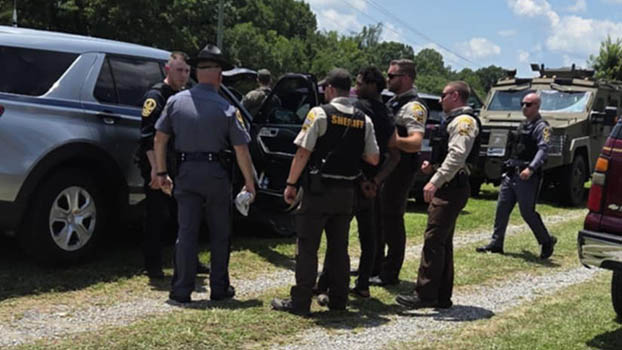It Was An Off Hunting Year
Published 12:45 pm Thursday, April 2, 2015
Statewide, it was an off year for deer hunters.
It was also an off year locally.
According to Virginia Department of Game and Inland Fisheries (VDGIF) figures, the fall deer kill total was down 22 percent and 18 percent below the ten-year average. Overall, 190,745 deer were reported killed by hunters.
Numbers were also down for turkey. Statewide, 2,988 turkeys were harvested in the fall turkey season, 44 percent below the previous year’s reported kill. The only category where there was an increase involved black bear. There were 2,405 bear killed in the hunting season, representing a four percent increase over 2013’s 2,312.
<p align=”center”>Local Deer Numbers
Local numbers mirrored that of the state. Buckingham’s total 2,154 deer harvested in 2014 is an impressive number among area counties. By comparison, only 1,160 were taken in Appomattox, 1,693 in Goochland, and 1,368 in Fluvanna. However, Buckingham’s figures were down by just over 1,000 deer from the 3,165 harvested 2013. According to Department of Game and Inland Fisheries data, 2014 was the lowest total dating to 2005.
The 2,003 deer harvested in Cumberland in 2014 were 742 less than 2013. It, too, is the lowest figure dating to 2005.
Prince Edward figures were also way below 2013. There were 1,373 deer killed in 2014, compared to 2,402 in 2013. Prince Edward has steadily netted over 2,000 since 2007.
Talking Turkey
Turkey numbers were also down in Buckingham. There were 91 killed in 2013, and 50 in 2014. The five-year average is 62.
Looking at the trend, Buckingham hunters took 98 turkeys in 2005, 64 in 2006, 82 in 2007, 39 in 2008, 46 in 2009, 37 in 2010, 64 in 2011, and 68 in 2012.
In Cumberland, 109 turkeys were killed in 2013, which dipped to 41 in 2014. The five-year average is 69.
Again, looking at the trend, there were 122 turkeys harvested in Cumberland in 2005, 84 in 2006, 98 in 2007, 62 in 2008, 74 in 2009, 44 in 2010, 78 in 2011, and 72 in 2012.
In Prince Edward, 70 turkeys were harvested in 2013, and 21 in 2014. The five-year average is 38.
There were 56 killed in Prince Edward in 2005, 47 in 2006, 79 in 2007, 34 in 2008, 52 in 2009, 22 in 2010, 42 in 2011, and 33 in 2012.
Bearing Straight
Buckingham enjoyed the largest harvest of black bear last year. There were 29 harvested in 2014, up from 20 in 2013. The peak year since 2005 was 2012, with 43.
Few black bear are harvested in Cumberland. There were only six in 2014, which is up from two in each of the two previous years. Cumberland’s peak year for harvesting black bear was 2009, when nine were taken.
Seven black bear were killed in 2014, down slightly from Prince Edward’s peak year, 2013 when 11 were taken.
Statewide Stats
Of the 190,745 deer harvested, 88,148 were antlered bucks, 14,592 were button bucks, and 87,937 were does.
Archers (excluding crossbows) killed 15,178 deer. Crossbow deer kills totaled 10,852. Muzzleloader hunters killed 48,282 deer.
Nearly 150,000 deer were checked using the Department of Game’s telephone internet checking system.
“Declining deer kills in Virginia are not unexpected,” a VDGIF press release stated. “The Department’s primary deer management effort over the past five to 10 years has been to increase the female deer kill over much of the state, especially on private lands, to meet the deer population objectives of stabilizing or reducing deer populations found in Virginia’s deer management plan.”
The press release also stated, “However, the magnitude of the 2014 deer kill decline was greater than anticipated.”
VDGIF offered several “possible explanations” including the “liberal either-sex hunting regulations (doe days) the Department has had in place sine 2008.” Hemorrhagic disease was present “in at least 28 counties in eastern Virginia this past fall prior to the opening of der season,” it was noted, and acorns were plentiful in hunting season, “reducing the need for deer to move long distances in search of food, making them less vulnerable to hunters.”
The decline in turkey numbers was not a surprise.
“Gary Norman, Wild Turkey Project Leader, indicated a decline in the harvest was expected because mast crops were generally above average across the state,” the VDGIF press release stated. “Good Mast crops depress harvest rates as turkeys move less to find food and typically spend most of their time in forested areas, using smaller home ranges and remaining out of view.”




